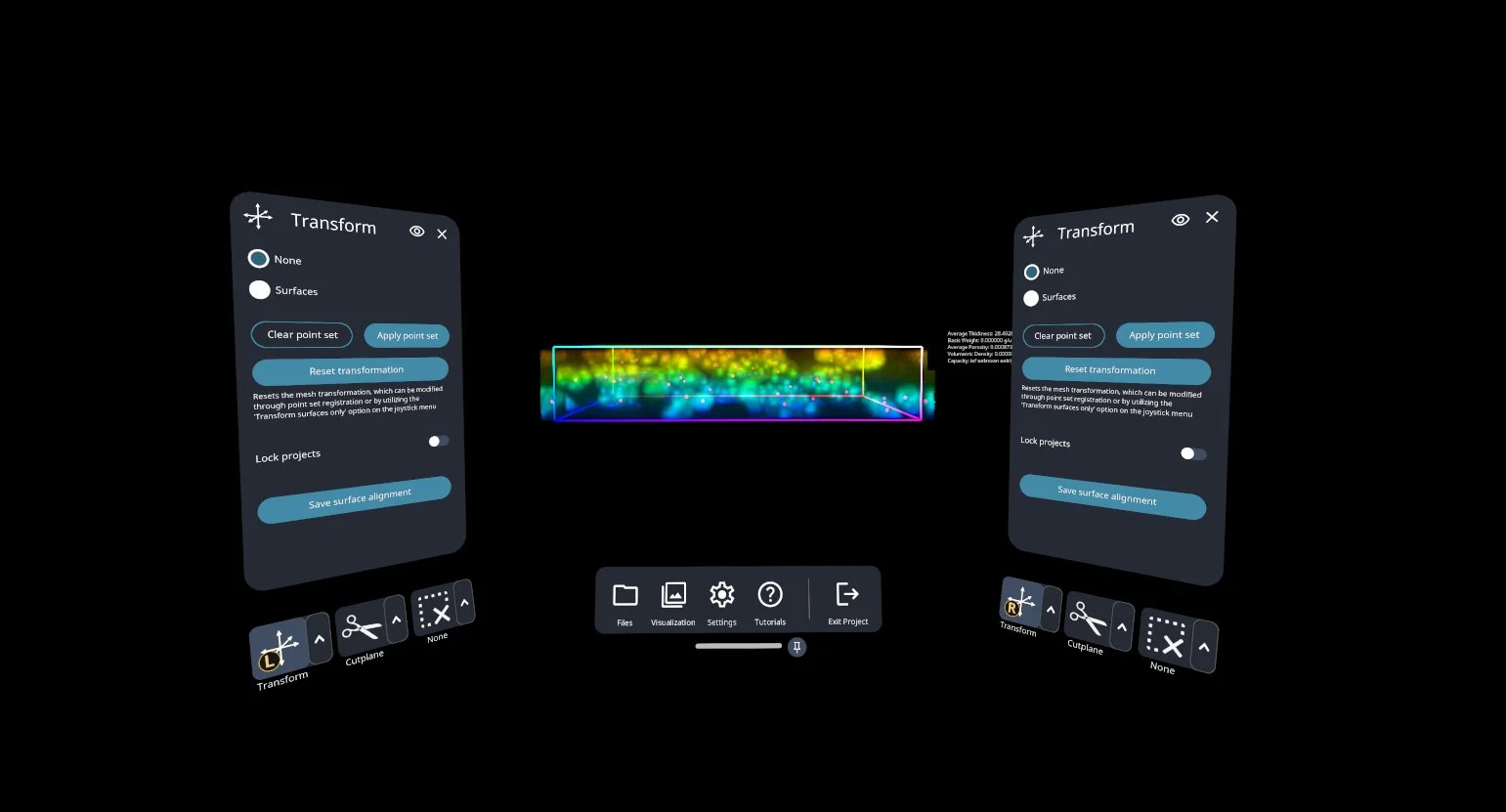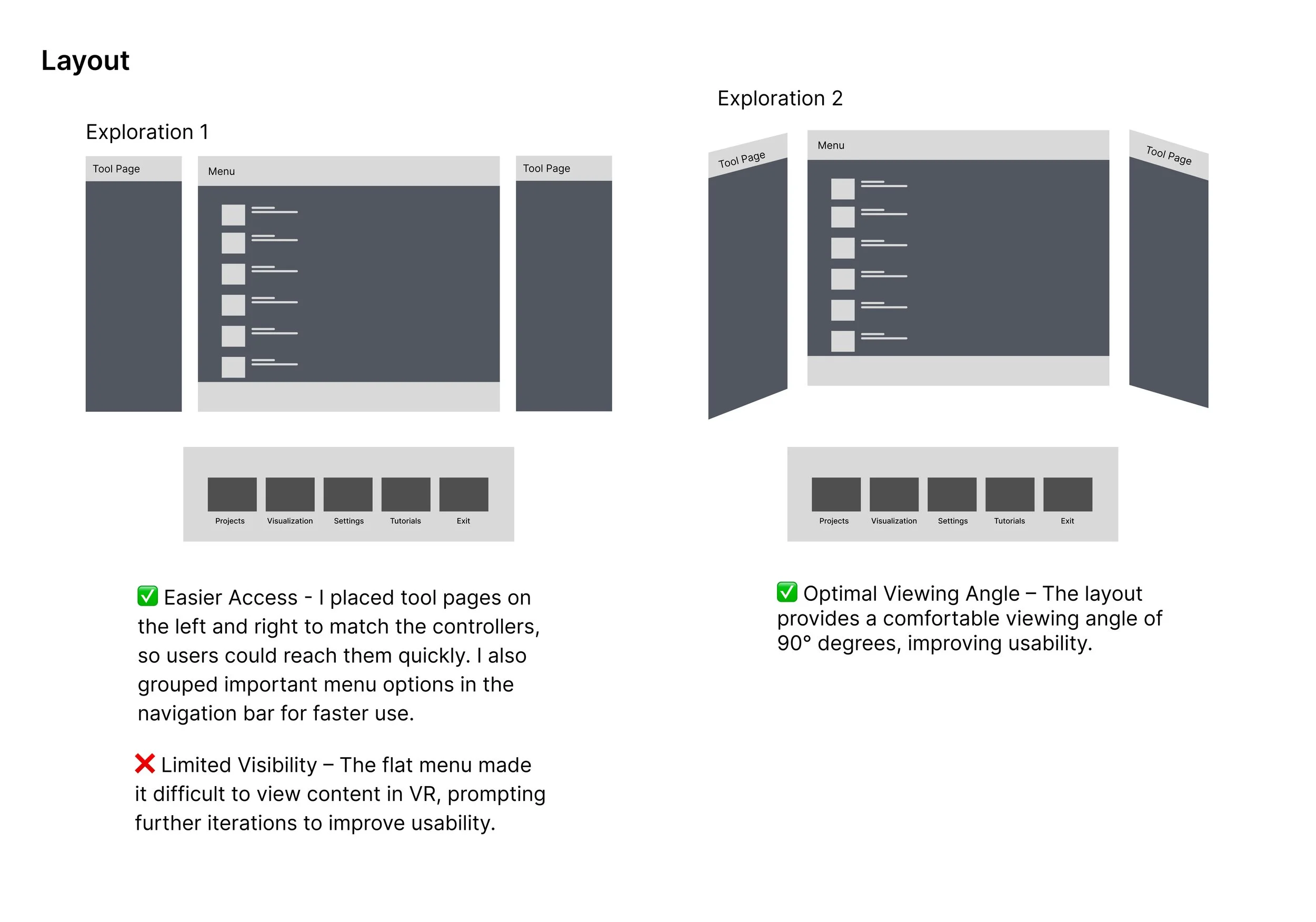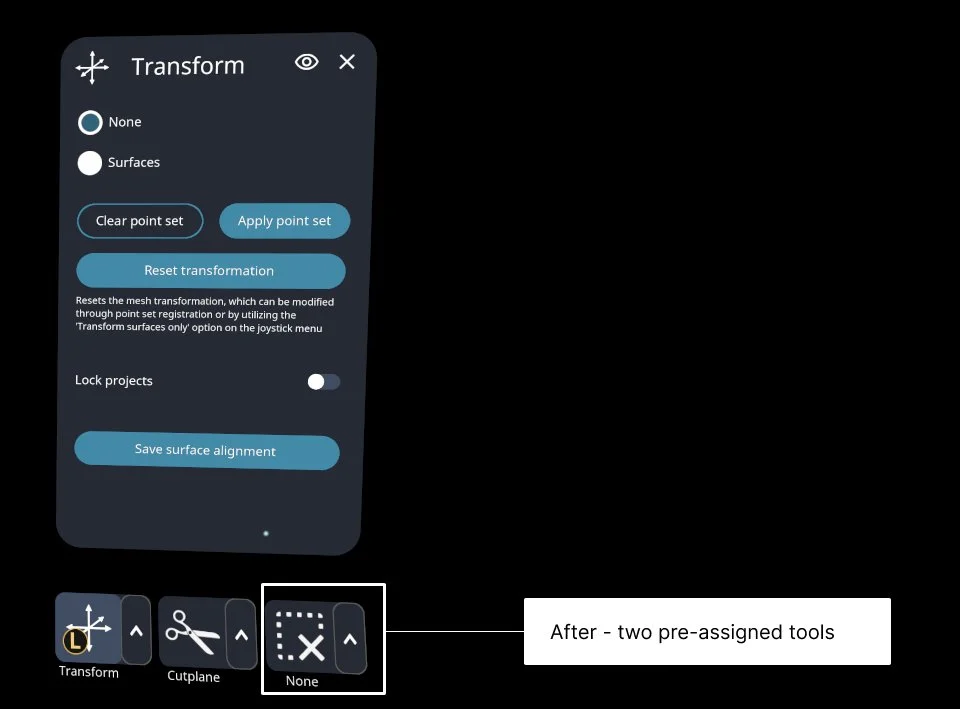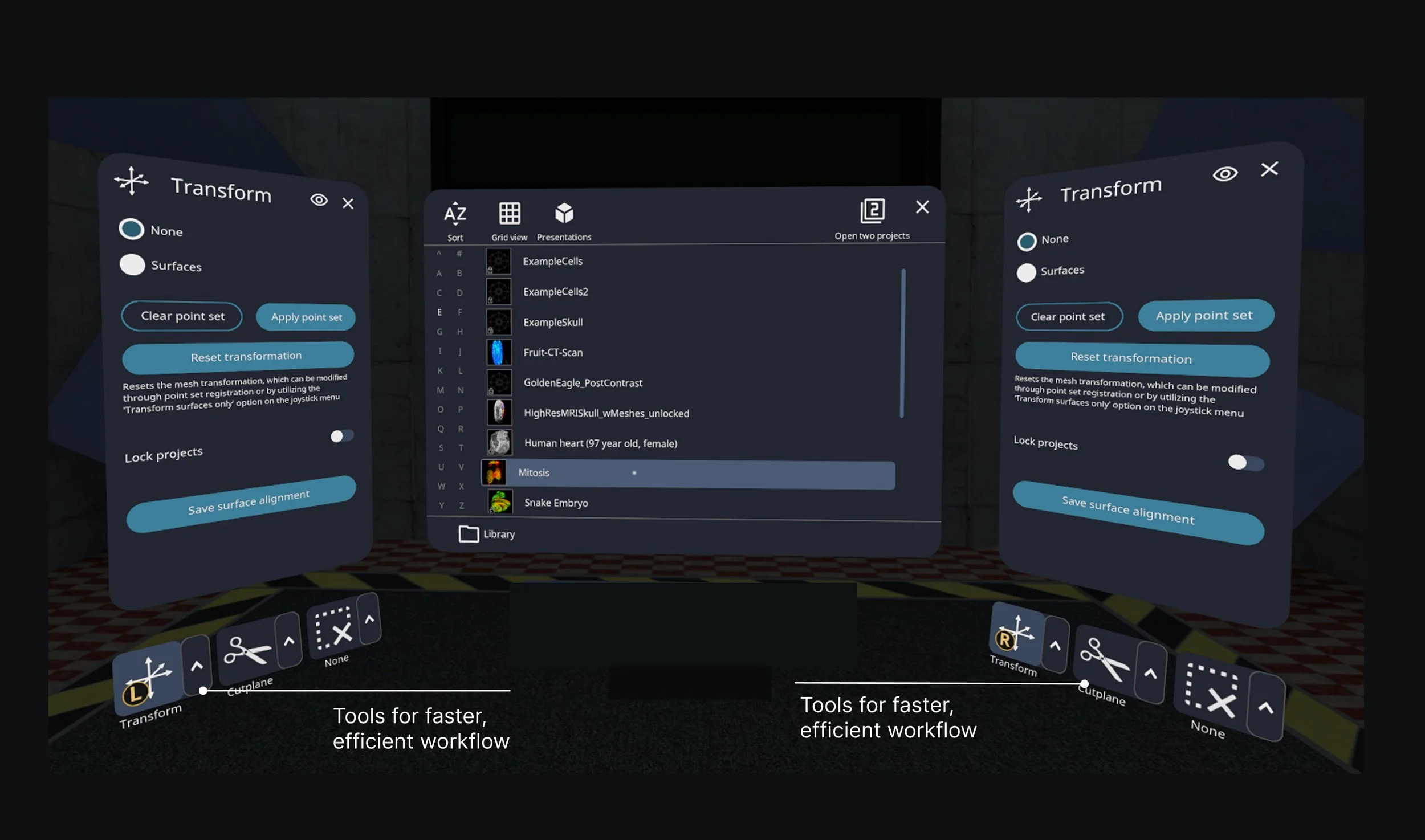IstoVisio (syGlass) | B2B
Reimagined VR Menu for Global Scientific Discovery
ROLE: FOUNDING PRODUCT DESIGNER
DURATION: 8 MONTHS
RELEASE DATE: MAY 2024
DOMAIN: VR | SCIENCE | B2B
syGlass is a data analysis and annotation software that helps scientists explore complex data and make discoveries. It supports both VR and web-based interfaces, giving researchers flexible ways to work with their data.
PROBLEM TO SOLVE
The old menu wasn’t intuitive - users got lost, flooded support with questions, or left for competitors. Fixing this was critical for adoption and retention, and it required a complete redesign of the menu to make it clear, usable, and scalable.
BUSSINESS GOAL
Improve feature discoverability to reduce churn and lower support demand, ensuring users see the full value of the product.
I joined IstoVisio as the first designer to solve a big problem: the software was precise but hard to use.
In 8 months, I redesigned the menu and three core tools, turning a rigid interface into one scientists could navigate with ease.
This case study shows the key redesigns that improved usability, adoption, and growth.
BEFORE
AFTER
IDENTIFYING GAPS BETWEEN DESIGN AND USERS EXPECTATIONS
To understand why the menu was confusing, I ran remote interviews and observed users navigating the software in real time. In addition, I conducted a heuristic analysis against usability best practices. Together, these methods revealed clear gaps between user expectations and the actual design.
15+
REMOTE USER INTERVIEWS
5+
COUNTRIES
KEY FINDINGS
2
MONTHS OF RESEARCH
DESIGN GOALS
1. Discoverable
Make core features easy to find so users immediately see the product’s value.
2. Intuitive
Reduce reliance on support by creating clear, predictable navigation pathways.
3. Scalable
Design a menu structure that can grow with new features while staying simple to use.
EXPLORING DIFFERENT DIRECTIONS
I sketched low-fidelity prototypes to explore different menu layouts, tool selection options, and menu flexibility. This helped me compare approaches and understand how each direction could shape the overall menu experience in VR.
Pic. 1 - Early layout sketches focused on making the menu easier to glance at and directing attention to key features, while experimenting with viewing angles for a better VR experience.
Pic. 2 - Exploring how to move beyond a long flat list by grouping tools into categories, so it’s easy to understand which ones relate to video creation, segmentation, or other tasks.
Pic. 3 - Exploring a shift from a static menu to a customizable one, where pages could open and close separately and the menu could be pinned or moved with a hand controller. This gave users more control over their workspace and created a flexible structure that could grow with new features.
USER FEEDBACK ON THE REDESIGNED MENU
To evaluate whether the redesign was on the right track, I conducted two rounds of task-based think-aloud usability testing with 8 participants.
Tool Selection
Show/Hide Tool Page
Before: Three tools were pre-assigned by default. 6 out of 8 users said they only needed two, so the extra tool created friction and unnecessary steps.
After: Tools became customizable. Users could choose the set they actually needed, reducing clicks and aligning the interface with real workflows.
Before: All 8 users struggled to reopen the minimized page, exposing a critical usability gap.
After: I added subtle animations and a clear indicator bar, drawing on familiar desktop patterns to signal hidden pages. In testing, all 8 users easily reopened tool pages, showing the solution was intuitive and fit smoothly into their workflow.
FINAL DESIGNS
After usability testing, I used the feedback to improve the designs and create the final version for handoff.
A new flexible menu for a smoother VR experience
The dynamic menu lets users customize their view, creating a more focused and seamless workflow.
A toolset that adapts to users
This setup allows users to choose their most-used tools, creating a more simplified and consistent workflow.
Helping users find the tools they need
The new design helps users discover available functions and recognize the full value of the software, creating a more transparent and consistent workflow.
MAKING SCIENTIFIC SOFTWARE USABLE
Scientific software is powerful and precise, but rarely intuitive. I couldn’t oversimplify the menu without sacrificing the accuracy researchers needed, so I redesigned it to balance precision with usability. To improve learnability, I also introduced enhancements beyond the interface.
Real Case Studies
Walkthroughs on the website showing core features in action - from basic tasks to advanced workflows.
Readable Manual
A new manual with clear explanations and case studies, written for users who prefer in-depth reference.
Weekly Updates
Short emails highlighting new features and how to use them effectively in real work.
RESULTS
10%
Increase in customer retention
80%
Increase in User Satisfaction
REFLECTION
Dependencies shape redesigns
When working on a legacy system, features never stand alone. Redesigning the menu meant understanding its dependencies - how it connected to existing flows, how changes would ripple across the system, and how users would discover new functionality. Ignoring these dependencies would have caused more friction than it solved.
Designing for VR means designing for the real world
In VR, ergonomics and physical constraints matter as much as pixels. A menu that feels fine on a flat screen can be tiring, awkward, or even unusable in 3D space. Balancing usability with physical comfort became essential to make the experience both intuitive and sustainable for researchers spending hours in the environment.













